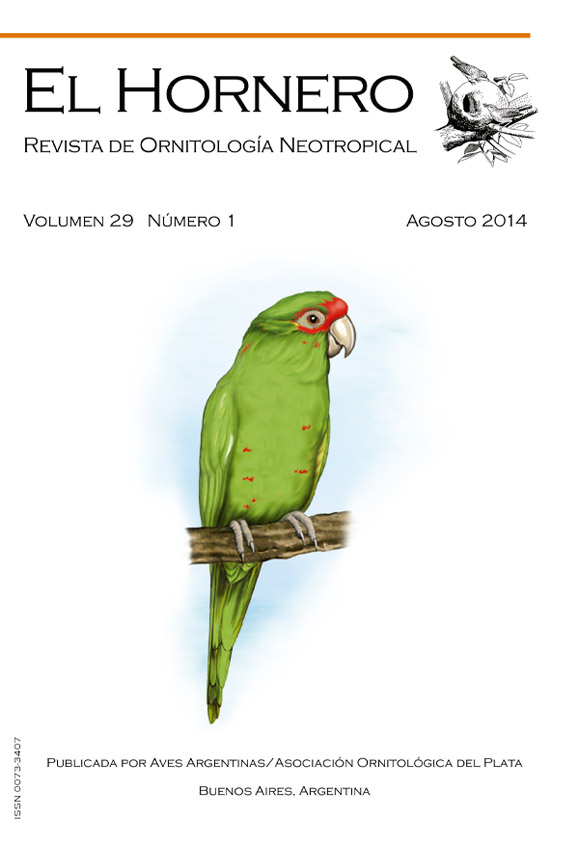Resumen
La estructura y la ubicación del nido deben maximizar el beneficio que proporciona a la nidada, tanto en el aislamiento del ambiente como en la protección contra predadores. El Varillero Ala Amarilla (Agelasticus thilius) construye nidos abiertos entrelazados a la vegetación palustre en zonas de bañado. Se estudió la altura a la que estas aves construyen su nido y el espesor de sus paredes laterales y de la base, buscando un patrón que correlacione estas características. Los nidos fueron construidos en la mitad inferior de las varas de totora y se encontró una correlación positiva entre la altura de la totora y la distancia del nido a la punta de la vara. Tanto el espesor de la pared como el de la base aumentaron con la distancia entre el nido y la punta de las varas a las que estaban entrelazados, lo cual podría reforzar su estructura permitiéndole soportar los efectos del viento sin romperse. El espesor de la pared fue mayor en los nidos construidos a menor altura pero no se encontró el mismo patrón en el espesor de la base. Los factores ambientales que ponen a prueba la fortaleza de la estructura del nido podrían tener importancia en la determinación de la estructura y la posición de los nidos, mientras que la influencia del riesgo de predación podría ser menor.
Referencias
CIRNE MP Y LÓPEZ-IBORRA G (2005) Breeding biologyof Chestnut-capped Blackbirds in rice paddies in south-ern Brazil. Journal of Field Ornithology 76:411–416
CODY ML (1985) An introduction to habitat selectionin birds. Pp. 3–56 en: CODY ML (ed) Habitat selectionin birds. Academic Press, Orlando
FRAGA RM (2011) Family Icteridae (New World black-birds). Pp. 684–807 en: DEL HOYO J, ELLIOTT A YCHRISTIE DA (eds) Handbook of the birds of the world.Volume 16. Tanagers to New World blackbirds. LynxEdicions, Barcelona
LACK D (1972) Ecological adaptation for breeding in birds.Chapman and Hall, Londres
LONG AM, JENSEN WE Y WITH KA (2009) Orientationof Grasshopper Sparrow and Eastern Meadowlarknests in relation to wind direction. Auk 111:395–399

Esta obra está bajo una licencia internacional Creative Commons Atribución-NoComercial 4.0.





